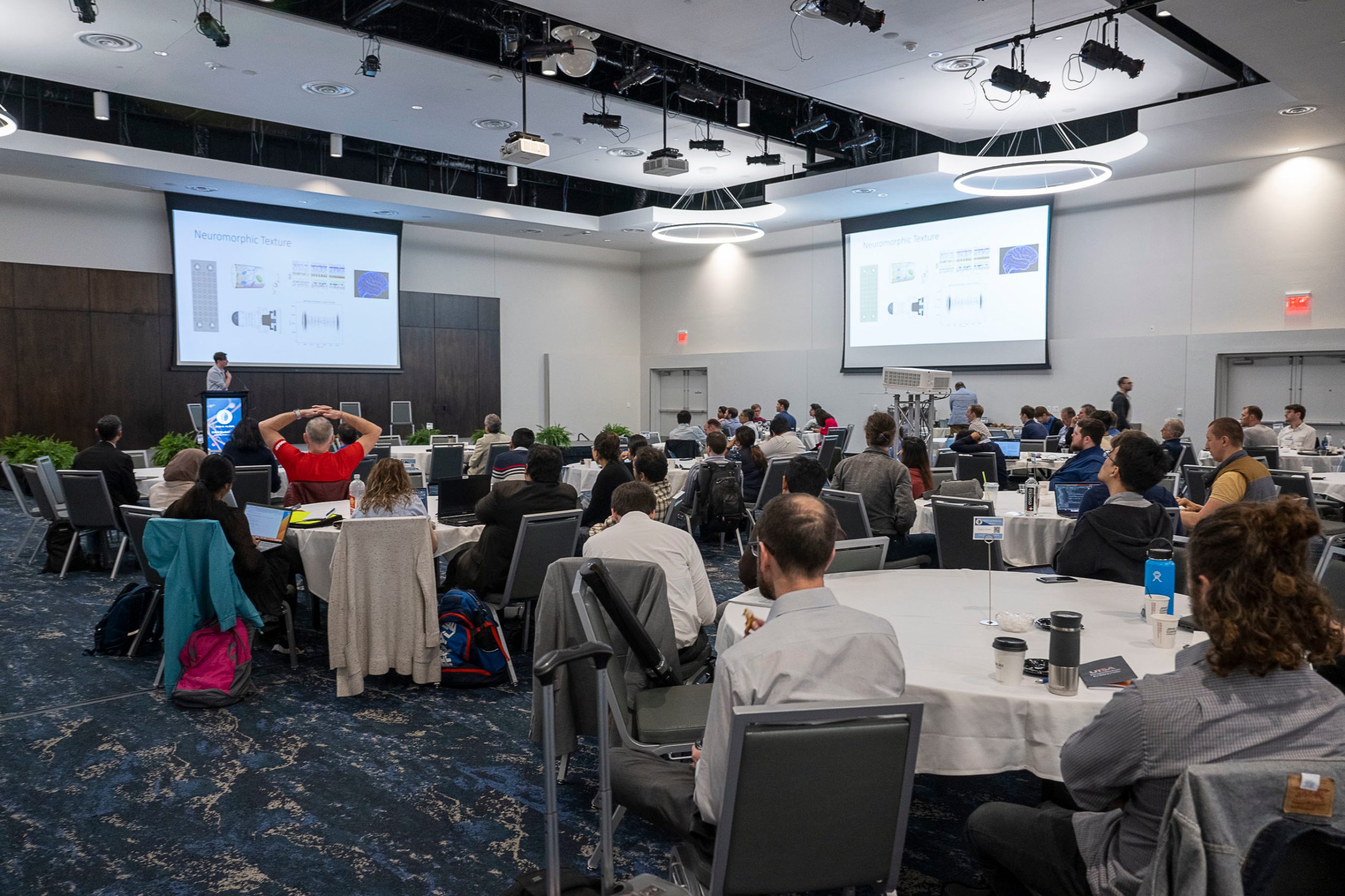UTSA hosted the 10th annual NICE 2023 meeting of researchers in the neuromorphic computing field. Experts discussed the development of neural algorithms and hardware architectures that are inspired by the brain’s processes, with the potential to revolutionize the field of computing.
The conference aims to bring together worldwide research communities in various industries, including universities, government and industry. It was held April 11–14.
The goal of NICE is to look to the brain for inspiration for making future computers both more powerful as well as more energy efficient.
“The goal of NICE is to look to the brain for inspiration for making future computers both more powerful as well as more energy efficient.”
“As the role of AI has expanded dramatically, the ability to understand biological brains can play a vital role in building intelligent machines. Advances in efficient computing hardware and systems, inspired by insights from neuroscience, will be instrumental in expanding the capabilities of AI to a wide range of applications,” said Dhireesha Kudithipudi, McDermott Endowed Chair in the Department of Electrical and Computer Engineering at UTSA, founding director of the MATRIX AI Consortium and the on-site organizer for NICE.

“UTSA is honored to host the 10th annual NICE Conference Series, bringing researchers from various disciplines across the globe together to facilitate and inspire conversations that will advance the scientific excellence in AI,” said UTSA President Taylor Eighmy. “Our knowledge enterprise, and specifically, UTSA’s Matrix AI Consortium, are continuously seeking opportunities to collaborate across sectors and look forward to the discoveries that stem from this conference.”
Keynote speakers at the San Antonio NICE conference included:
- Gert Cauwenberghs, professor of bioengineering, and co-director for the Institute for Neural Computation, University of California, San Diego
- Risto Miikkulainen, professor of computer science, and assistant vice president of Evolutionary Intelligence at UT-Austin’s Cognizant AI Labs
- Michael Milford, professor of electrical engineering and deputy director, Queensland University of Technology Center for Robotics
Leading researchers from Heidelberg University, IBM and the National Institute of Standards and Technology (NIST) also spoke at the event. For more information on the topics, click here.
“The goal of NICE is to look to the brain for inspiration for making future computers both more powerful as well as more energy efficient,” said Brad Aimone, a distinguished member of technical staff in the Center for Computing Research at the Sandia National Laboratories and one of the lead organizers for NICE. “This will help us make exciting technologies such as artificial intelligence both cheaper in terms of power and climate costs as well as more manageable and secure, which will allow all of us to benefit in the long run.”
The conference is sponsored and hosted by Intel, the UTSA VP for Research, Economic Development, and Knowledge Enterprise (REDKE) and the MATRIX: AI Consortium for Human Well-Being at UTSA.
Intel hosted tutorials that focus on its latest developments of the neuromorphic chip, Loihi, and the LAVA framework on April 14.
Additional tutorials were offered at the conference by Sandia National Laboratories and Heidelberg University on April 14.
Story originally by Kevin Wier

